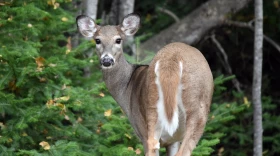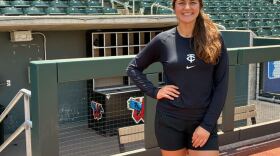
Agencies across Kansas are warning drivers to take additional caution as deer mating season begins, bringing higher levels of deer activity.
Sedgwick County had the highest reported cases of vehicle-deer collisions in the state last year with 418 cases. Butler County followed with 384 collisions.
Shawn Steward from the AAA of Kansas says the average cost per claim from car damage due to animal collisions is nearly $4,300.
Nadia Reimer from the Kansas Department of Wildlife, Parks, and Tourism says paying extra attention while driving during deer season is integral to avoiding crashes. She advises that honking your horn to alert deer and watching for their reflective eyes are ways to avoid a deer in the dark.
Reimer also says to refrain from taking any sudden maneuvers to avoid hitting a deer.
“Don’t try and swerve to get away from a deer; that’s where we see the majority of accidents," she says. "It’s typically: A deer comes out, the deer scares the driver, the driver then swerves to avoid, and that’s what causes a crash.”
Officials recommend the following to help drivers avoid collisions with deer:
- Be extra attentive at dawn and dusk when deer are most active. Mid-November is the peak of the deer mating season.
- If you spot one deer, there are likely to be more nearby.
- Be alert driving through wooded areas, past tree lines, and near sources of water.
- Deer crossing signs indicate high numbers of vehicle-deer collisions.
- Use your brights to better scan the road.
- Always wear a seatbelt and use proper child-safety seats.
Mya Acosta is an intern in the KMUW News Lab.
Copyright 2019 KMUW | NPR for Wichita








